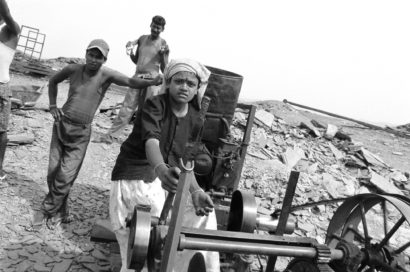Tag: Livelihoods
This rapid review synthesises findings from rigorous academic, practitioner, and policy references published in the past 10 years that discuss livelihood options and pathways out of poverty for households in Nepal. The World Bank (2016) highlights that in 1991, circa 40% of the Nepali population were identified as poor. Further rounds of the Nepal Living… Read more
This review outlines ways in which different groups of people might be unintentionally excluded if their needs and livelihoods are not taken into account in infrastructure projects. The Sustainable Development Goals (SDGs) and the concept of ‘leave no one behind’ capture the desire to ensure people are not excluded as citizens in their society. Some… Read more
This rapid review synthesises data from academic, policy, and NGO sources on child labour in the artisanal and small-scale mining (ASM) sector in Asia and Africa. ASM refers to small groups engaged in low-cost, low-tech, labour-intensive excavation and processing of minerals. Therefore, a clear distinction can be made between industrial and large-scale (usually licensed) mining… Read more
This exploratory rapid review finds that child labour in agriculture is a global issue, with the agricultural sector accounting for the majority of child labourers. Across regions and countries agriculture is usually the main sector for children’s economic activity. However, there is considerable variation in the prevalence of child labour between and within countries. Agricultural… Read more
This five day rapid review looks at the experiences globally of civil society organisations providing or supporting accountability mechanisms in cash transfer programmes. Bhargava and Raha’s (2015: 12) review of civil society engagement with cash transfer programme accountability found only few studies, suggesting to them that there is a significant knowledge gap. A mixture of… Read more
‘Modern slavery’ encompasses a variety of situations in which one person is forcibly controlled by one or more others for the purpose of exploitation (Cockayne, 2015). ‘Forced or compulsory labour’ is defined by the ILO Forced Labour Convention as ‘all work or service which is exacted from any person under the menace of any penalty… Read more
This review looks at the availability of funds to tackle modern slavery and human trafficking, and the availability of data in this regard. It seeks to move beyond the findings of Martina Ucnikova’s 2014 paper, OECD and Modern Slavery: How much aid money is spent to tackle the issue?, and identify updated (post-2013) data on… Read more
‘Modern slavery’ encompasses a variety of situations in which one person is forcibly controlled by one or more others for the purpose of exploitation (Cockayne, 2015). ‘Forced or compulsory labour’ is defined by the ILO Forced Labour Convention as ‘all work or service which is exacted from any person under the menace of any penalty… Read more
Financing for social protection often comes from government funds. Any way of expanding fiscal space could therefore be useful with the political will for prioritisation (UNESCP, 2016). Egypt created an Economic Justice Unit in the Ministry of Finance to review expenditure priorities, and Costa Rica and Thailand shifted military spending to finance universal health services… Read more
In general systematic and rigorous reviews find limited (and little robust) evidence on the effectiveness of interventions to engage parents in their children’s learning in resource-constrained countries – when looking at parental participation in their children’s literacy development and parental engagement with schools. Effects tend to be mixed, with scarce evidence making it hard to… Read more
This rapid review synthesises findings from rigorous academic, practitioner, and policy references published in the past fifteen years that discuss the prevalence of the worst forms of child labour. Globally, children are routinely engaged in paid and unpaid forms of work that are considered not harmful to them. They are classified as child labourers when… Read more









